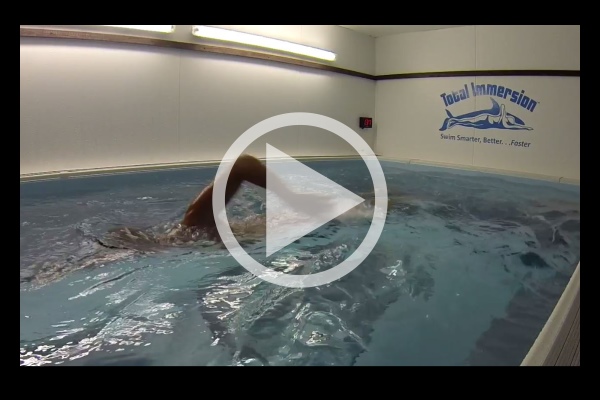How Can We Help?
Intro to Generate Forward Momentum
Forward Momentum Introduction
This introduction refers to the third of our Four Essential Features of the freestyle stroke: Generate Forward Momentum.
The Recovery Swing
In traditional swimming and land-mammal thinking, the main action of the stroke is pull-pull-pull back on the water with the arms. It is not so important how the arms get forward to get back into position to pull again. But understand that the recovery and entry and slide into Streamline Position is the most important moment of the whole stroke because this is where you deliver force into the most effective place to make your body accelerate forward.
So it is extremely important to bring the arm forward in a certain way to create this acceleration effect.
Imagine how a baseball pitcher winds up and swings his torso and arm in a special choreography in order to throw a ball extremely fast with great precision in a certain direction. His rotation and arm swing generate a wave of force that travels down his arm and reaches the fingers at the moment he’s ready to release the ball. The ball receives that waves of force and shoots forward out of his hand and toward the target.
So too, you are using the carefully shaped and directed swing of your arm and the torso rotation (at entry moment) to send a wave of force down your arm as that arm enters and extends under the water, in the direction you are traveling. Whereas the baseball pitcher delivers force into the ball and then the ball travels away, in the case of swimming your body is the projectile. This wave of force drives into the water molecules ahead of you and gets them moving out of the way so that your body can occupy that space ahead. That is how you move forward.
The primary purpose of the whole stroke is about generating force that flows through the body and into that streamline shape, in order to part a path through the water ahead of you. The shape, motion and direction of that recovery swing is the start of this action. How you swing that arm, and direct it into the water have a tremendous effect on how well your body moves forward, at what energy cost. You must create a wave of force in the direction you intend to travel.
The ‘wind up’ or delivery of that force-forward in the forward direction requires the recovery arm to come forward in a particular manner. The shoulder slides and arm swings in such a way that they move parallel to the spine, never pulling or pushing it. That arm lifted up into the air draws gravity, and it builds momentum as it swings its weight.
At the entry moment, that force of gravity pulling downward is used to pull the arm and the high side of the body back down into the water, and the forward momentum is channeled into that arm extend forward underwater, parting water molecules. The whole body then slides behind that extending lead arm.
This is the ‘wind up’ for delivering force forward, into the water to cut a path ahead. The body slides into Streamline Position as the wave of momentum travels through it, sliding it forward, until the other arm is ready to enter on the other side, repeating the same process again.
Overall, we want to create three main features in the Recovery swing movement:
1. The shoulder joint ‘opens up’, sliding parallel to the spine, to swing freely, with the least tension or internal resistance.
2. The elbow leads the way, fingers hanging below, barely brushing the surface.
3. The swing of the arm builds momentum in the forward direction, no other direction.
4. The swing of the arm is fluid, almost weightless feeling
In this video you can observe the characteristics we’re trying to achieve in at normal stroke rates.

